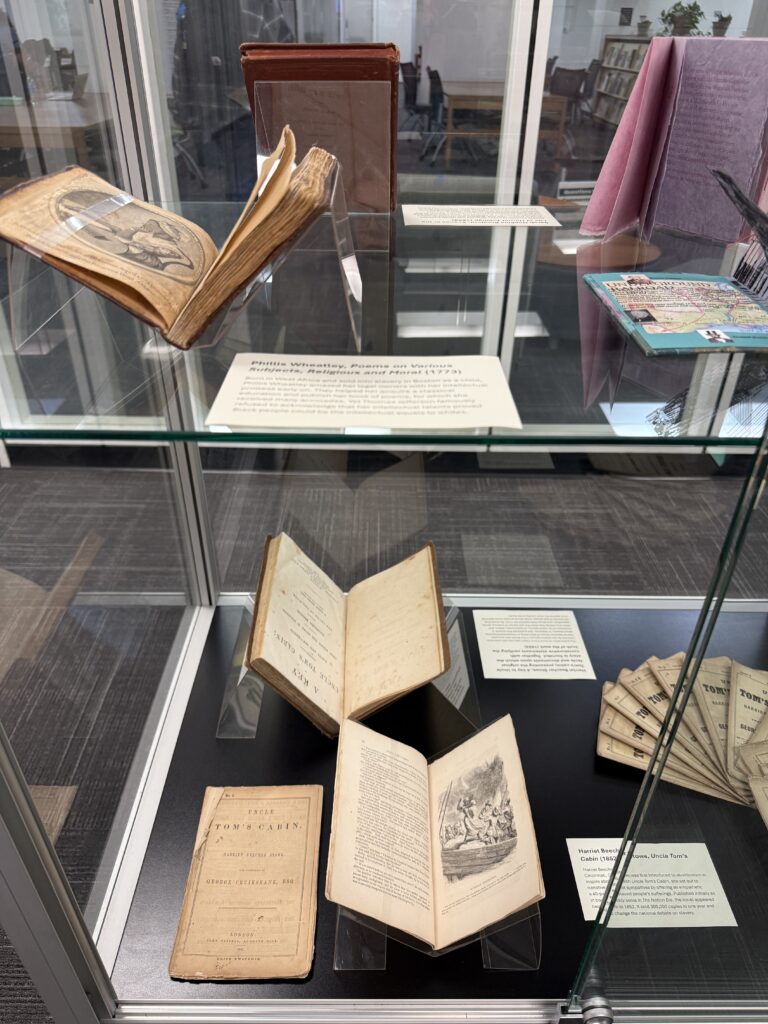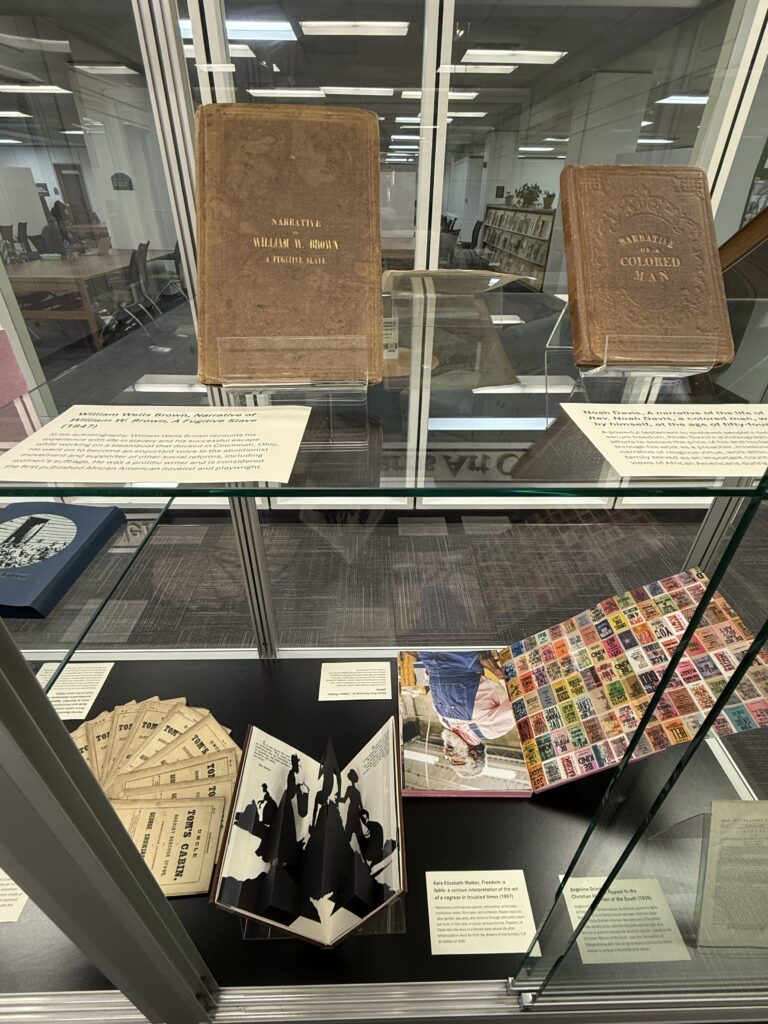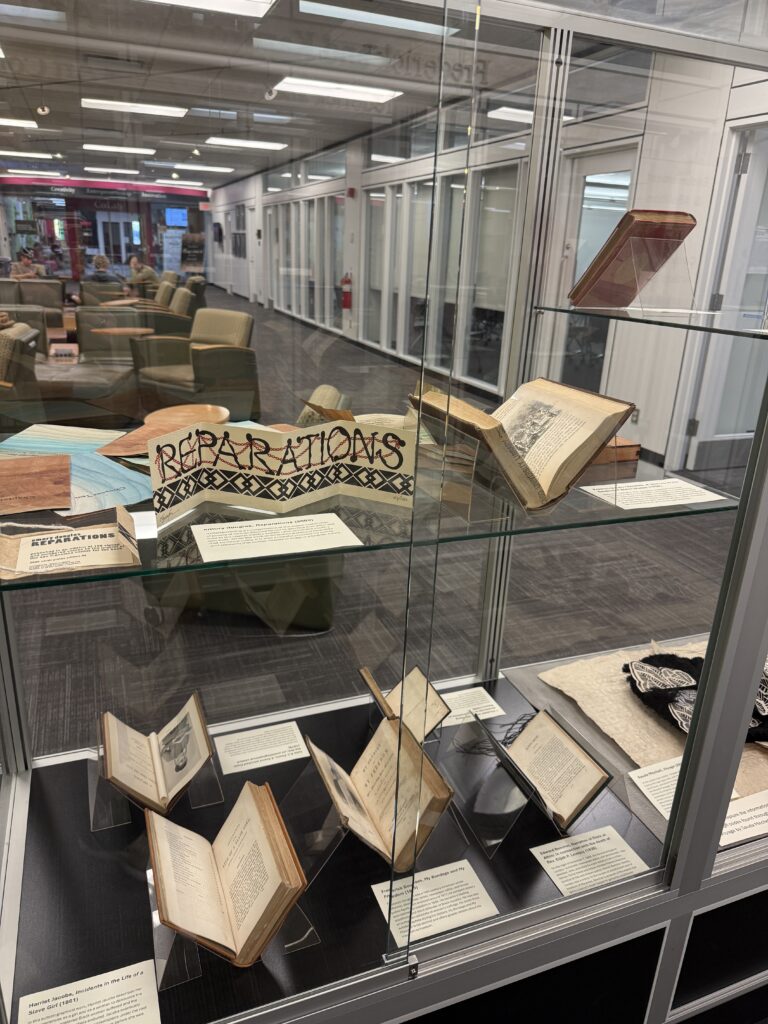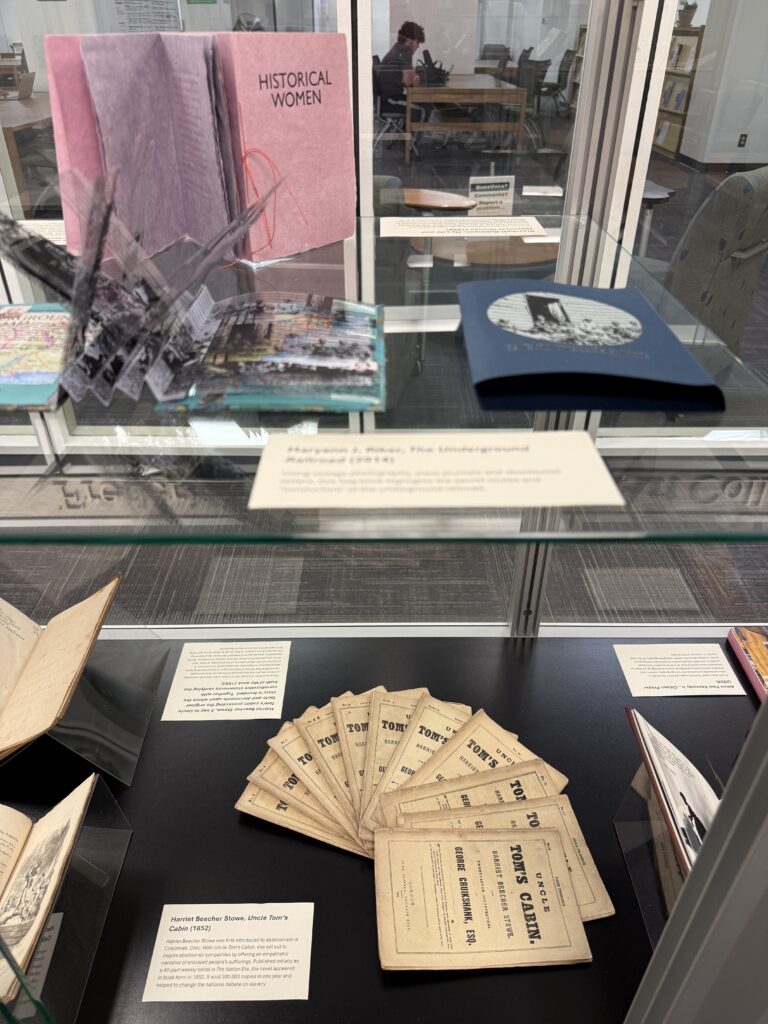By Miriam Intrator, Head of Archives & Special Collections and Rare Book Librarian
The exhibit and roundtable, Enslavement & Abolition in Antebellum Texts & Contemporary Artists’ Books, were co-curated with Associate Professor of History Mariana Dantas in support of her HIST 2000 Survey of United States History 1600-1877 course taught during the fall semesters. The 2025 version of the exhibit is expanded from our initial collaboration in fall 2023. Students in the class are assigned to keep a Historical Athens Selfie Log, documenting their visits to historic sites around campus and the community. The exhibit is one of those sites. The roundtable offers another opportunity for students to photograph themselves and reflect on what they see and learn.
View of books on display in the “Enslavement & Abolition in Antebellum Texts & Contemporary Artists’ Books” exhibit
The roundtable features Professor Emerita Katherine Jellison, Professor Paul C. Jones, and artist, archivist, and scholar Sauda Mitchell. Professor Jellison will discuss the historical context in which the texts on display were created, read, and interpreted. Professor Jones will discuss select texts from the literary perspective. Sauda Mitchell will discuss how historic texts and archives feature centrally and critically in her artistic work, and specifically in her artists’ book included in the exhibit, Voyage.
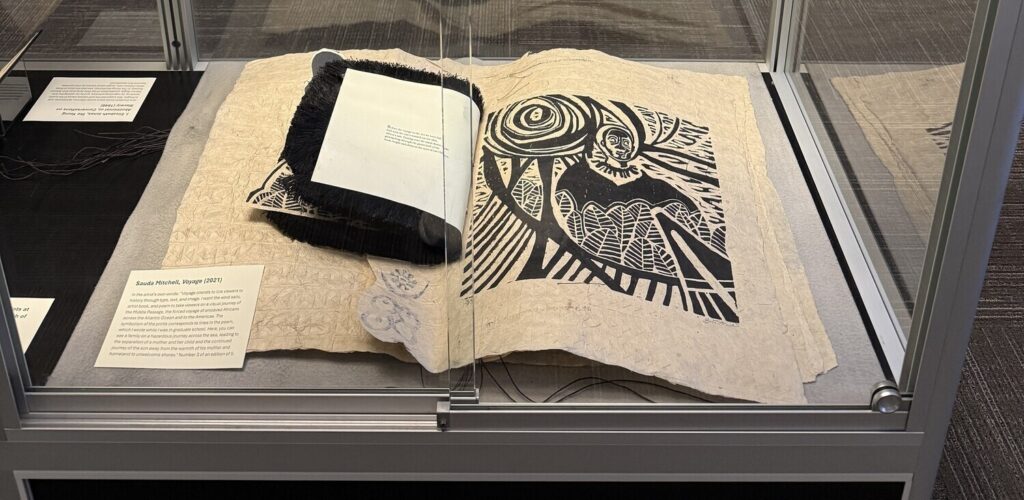
According to Professor Dantas:
This exhibit highlights some of the important antebellum publications that fed the anti-slavery debate in the United States. It includes works from well-known African American writers and both Black and white American activists in the abolitionist movement.
There are many important ways that the history of Ohio University is connected to the historical struggle for racial equality and justice (since the 19th century to today). The Rare Book Collection is one of those ways. It offers a treasure trove of relevant texts, and underscores the value Ohio University has placed in preserving crucial texts from the abolitionist movements. All can benefit from the reminder that we are part of the history of this struggle and of the efforts the to preserve it.
See for Yourself
The exhibit is on display on the 3rd floor of Alden Library through the end of the fall 2025 semester.
The roundtable is November 12, 1:00 – 2:00 PM, in-person and online. The recording will be shared here when it is available.
View of books on display in the “Enslavement & Abolition in Antebellum Texts & Contemporary Artists’ Books” exhibit
Exhibit Checklist
To view any of these items please complete the Research Request Form.
Edward Beecher, Narrative of Riots at Alton: in connection with the death of Rev. Elijah P. Lovejoy (1838).
Tia Blassingame, African American: a handbook (2020).
Tia Blassingame, The 14 Negro Students of Noyes Academy, Canaan, New Hampshire (2019).
Sarah Hopkins Bradford, Scenes in the Life of Harriet Tubman (1869).
William Wells Brown, Narrative of William W. Brown, A Fugitive Slave (1847).
Noah Davis, A Narrative of the Life of Rev. Noah Davis, a colored man, written by himself, at the age of fifty-four (1859).
emory douglas, Reparations (2009).
Frederick Douglass, My Bondage and My Freedom (1855).
Æthelred Eldridge, We will not be Blinded by Slavery Again (1990).
Julia A.J. Foote, A Brand Plucked from the Fire: an autobiographical sketch (1879).
See select digitized images of our copy of this book.
Julia Griffiths, Autographs for Freedom (1853).
See select digitized images of our copy of this book.
Angelina Grimké, Appeal to the Christian Women of the South (1836).
Harriet Jacobs, Incidents in the Life of a Slave Girl (1861).
J. Elizabeth Jones, The Young Abolitionist or, Conversations on Slavery (1848).
Amos Paul Kennedy Jr., Citizen Printer (2024).
Sauda Mitchell, Voyage (2021).
Solomon Northup, Twelve Years a Slave. Narrative of Solomon Northup, a citizen of New York, kidnapped in Washington City (1853).
Frederick Law Olmsted, A Journey in the Seaboard Slave States (1856).
Peter Randolph, From Slave Cabin to the Pulpit: the autobiography of Rev. Peter Randolph: the southern question illustrated and Sketches of slave life (1893).
Maryann J. Riker, The Underground Railroad (2014).
Pleschett Robinson, My Life and Historical Women (1995).
Harriet Beecher Stowe, Uncle Tom’s Cabin (1852).
Harriet Beecher Stowe, A key to Uncle Tom’s Cabin; presenting the original facts and documents upon which the story is founded. Together with corroborative statements verifying the truth of the work (1853).
Soujourner Truth, Narrative of Sojourner Truth (1875).
See select digitized images of our copy of this book.
Kara Elizabeth Walker, Freedom: a fable: a curious interpretation of the wit of a negress in troubled times (1997).
Phillis Wheatley, Poems on Various Subjects, Religious and Moral (1773).
See select digitized images of our copy of this book.
John G. Whittier, The Branded Hand (1845).

